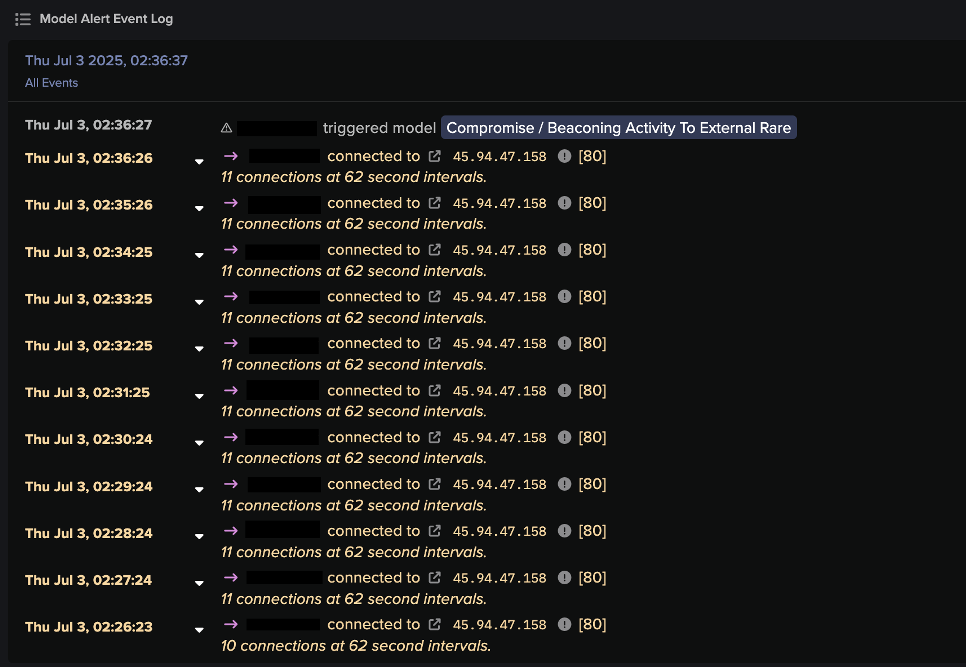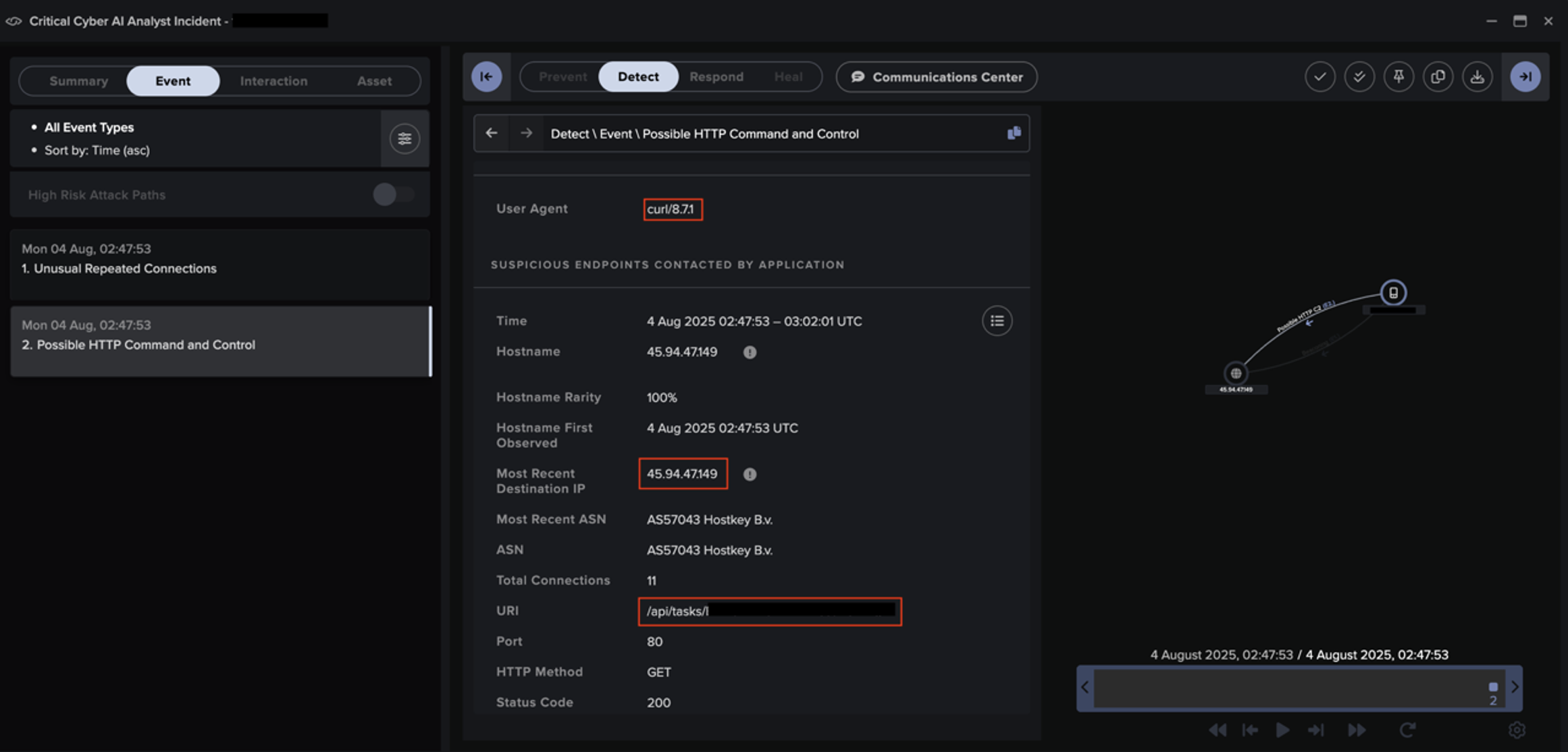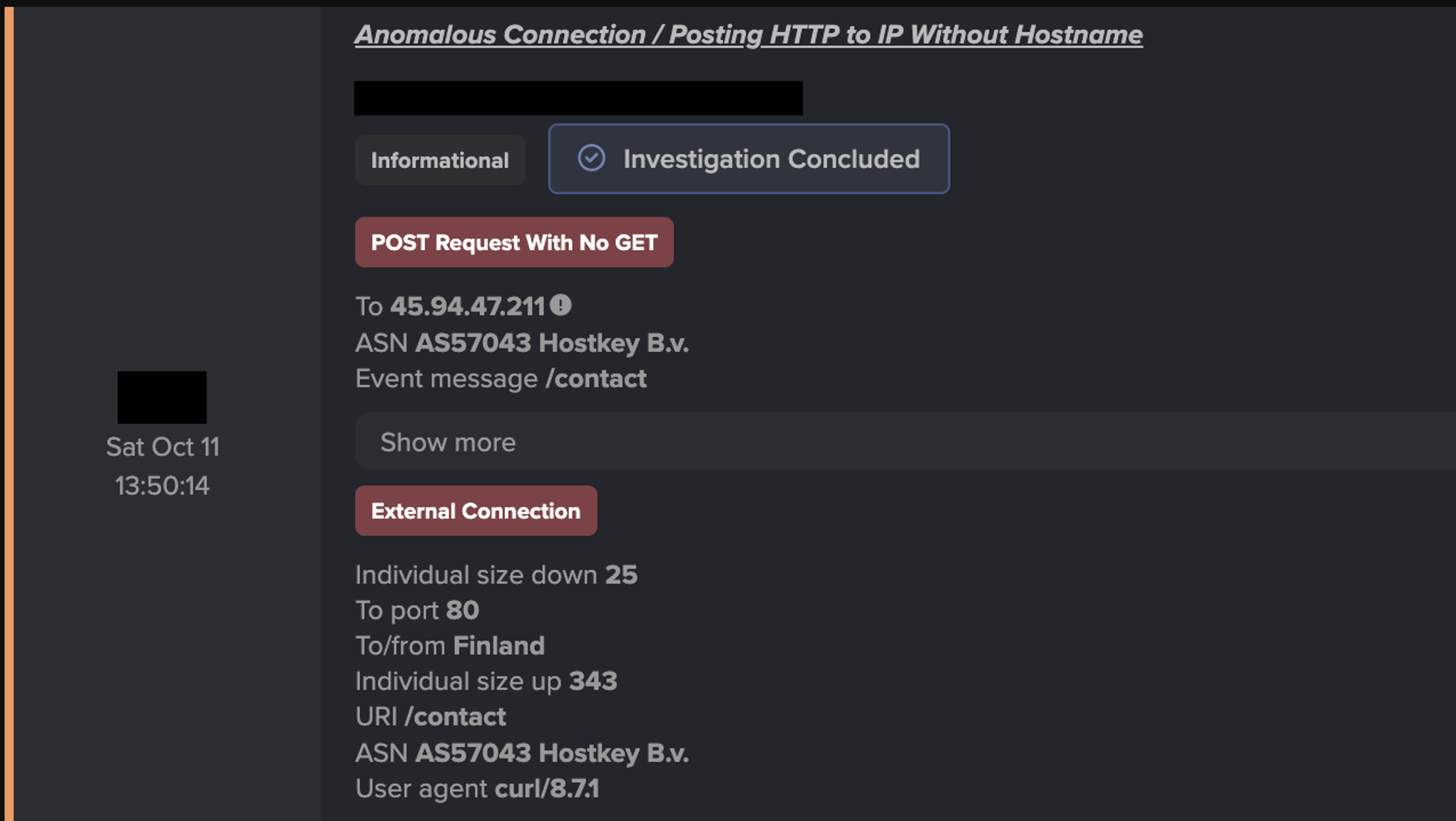Versatile Malware: PurpleFox
As organizations and security teams across the world move to bolster their digital defenses against cyber threats, threats actors, in turn, are forced to adopt more sophisticated tactics, techniques and procedures (TTPs) to circumvent them. Rather than being static and predictable, malware strains are becoming increasingly versatile and therefore elusive to traditional security tools.
One such example is PurpleFox. First observed in 2018, PurpleFox is a combined fileless rootkit and backdoor trojan known to target Windows machines. PurpleFox is known for consistently adapting its functionalities over time, utilizing different infection vectors including known vulnerabilities (CVEs), fake Telegram installers, and phishing. It is also leveraged by other campaigns to deliver ransomware tools, spyware, and cryptocurrency mining malware. It is also widely known for using Microsoft Software Installer (MSI) files masquerading as other file types.
The Evolution of PurpleFox
The Original Strain
First reported in March 2018, PurpleFox was identified to be a trojan that drops itself onto Windows machines using an MSI installation package that alters registry values to replace a legitimate Windows system file [1]. The initial stage of infection relied on the third-party toolkit RIG Exploit Kit (EK). RIG EK is hosted on compromised or malicious websites and is dropped onto the unsuspecting system when they visit browse that site. The built-in Windows installer (MSIEXEC) is leveraged to run the installation package retrieved from the website. This, in turn, drops two files into the Windows directory – namely a malicious dynamic-link library (DLL) that acts as a loader, and the payload of the malware. After infection, PurpleFox is often used to retrieve and deploy other types of malware.
Subsequent Variants
Since its initial discovery, PurpleFox has also been observed leveraging PowerShell to enable fileless infection and additional privilege escalation vulnerabilities to increase the likelihood of successful infection [2]. The PowerShell script had also been reported to be masquerading as a .jpg image file. PowerSploit modules are utilized to gain elevated privileges if the current user lacks administrator privileges. Once obtained, the script proceeds to retrieve and execute a malicious MSI package, also masquerading as an image file. As of 2020, PurpleFox no longer relied on the RIG EK for its delivery phase, instead spreading via the exploitation of the SMB protocol [3]. The malware would leverage the compromised systems as hosts for the PurpleFox payloads to facilitate its spread to other systems. This mode of infection can occur without any user action, akin to a worm.
The current iteration of PurpleFox reportedly uses brute-forcing of vulnerable services, such as SMB, to facilitate its spread over the network and escalate privileges. By scanning internet-facing Windows computers, PurpleFox exploits weak passwords for Windows user accounts through SMB, including administrative credentials to facilitate further privilege escalation.
Darktrace detection of PurpleFox
In July 2023, Darktrace observed an example of a PurpleFox infection on the network of a customer in the healthcare sector. This observation was a slightly different method of downloading the PurpleFox payload. An affected device was observed initiating a series of service control requests using DCE-RPC, instructing the device to make connections to a host of servers to download a malicious .PNG file, later confirmed to be the PurpleFox rootkit. The device was then observed carrying out worm-like activity to other external internet-facing servers, as well as scanning related subnets.
Darktrace DETECT™ was able to successfully identify and track this compromise across the cyber kill chain and ensure the customer was able to take swift remedial action to prevent the attack from escalating further.
While the customer in question did have Darktrace RESPOND™, it was configured in human confirmation mode, meaning any mitigative actions had to be manually applied by the customer’s security team. If RESPOND had been enabled in autonomous response mode at the time of the attack, it would have been able to take swift action against the compromise to contain it at the earliest instance.
Attack Overview

Initial Scanning over SMB
On July 14, 2023, Darktrace detected the affected device scanning other internal devices on the customer’s network via port 445. The numerous connections were consistent with the aforementioned worm-like activity that has been reported from PurpleFox behavior as it appears to be targeting SMB services looking for open or vulnerable channels to exploit.
This initial scanning activity was detected by Darktrace DETECT, specifically through the model breach ‘Device / Suspicious SMB Scanning Activity’. Darktrace’s Cyber AI Analyst™ then launched an autonomous investigation into these internal connections and tied them into one larger-scale network reconnaissance incident, rather than a series of isolated connections.

As Darktrace RESPOND was configured in human confirmation mode, it was unable to autonomously block these internal connections. However, it did suggest blocking connections on port 445, which could have been manually applied by the customer’s security team.

Privilege Escalation
The device successfully logged in via NTLM with the credential, ‘administrator’. Darktrace recognized that the endpoint was external to the customer’s environment, indicating that the affected device was now being used to propagate the malware to other networks. Considering the lack of observed brute-force activity up to this point, the credentials for ‘administrator’ had likely been compromised prior to Darktrace’s deployment on the network, or outside of Darktrace’s purview via a phishing attack.
Exploitation
Darktrace then detected a series of service control requests over DCE-RPC using the credential ‘admin’ to make SVCCTL Create Service W Requests. A script was then observed where the controlled device is instructed to launch mshta.exe, a Windows-native binary designed to execute Microsoft HTML Application (HTA) files. This enables the execution of arbitrary script code, VBScript in this case.


There are a few MSIEXEC flags to note:
- /i : installs or configures a product
- /Q : sets the user interface level. In this case, it is set to ‘No UI’, which is used for “quiet” execution, so no user interaction is required
Evidently, this was an attempt to evade detection by endpoint users as it is surreptitiously installed onto the system. This corresponds to the download of the rootkit that has previously been associated with PurpleFox. At this stage, the infected device continues to be leveraged as an attack device and scans SMB services over external endpoints. The device also appeared to attempt brute-forcing over NTLM using the same ‘administrator’ credential to these endpoints. This activity was identified by Darktrace DETECT which, if enabled in autonomous response mode would have instantly blocked similar outbound connections, thus preventing the spread of PurpleFox.

Installation
On August 9, Darktrace observed the device making initial attempts to download a malicious .PNG file. This was a notable change in tactics from previously reported PurpleFox campaigns which had been observed utilizing .MOE files for their payloads [3]. The .MOE payloads are binary files that are more easily detected and blocked by traditional signatured-based security measures as they are not associated with known software. The ubiquity of .PNG files, especially on the web, make identifying and blacklisting the files significantly more difficult.
The first connection was made with the URI ‘/test.png’. It was noted that the HTTP method here was HEAD, a method similar to GET requests except the server must not return a message-body in the response.
The metainformation contained in the HTTP headers in response to a HEAD request should be identical to the information sent in response to a GET request. This method is often used to test hypertext links for validity and recent modification. This is likely a way of checking if the server hosting the payload is still active. Avoiding connections that could possibly be detected by antivirus solutions can help keep this activity under-the-radar.


The server responds with a status code of 200 before the download begins. The HEAD request could be part of the attacker’s verification that the server is still running, and that the payload is available for download. The ‘/test.png’ HEAD request was sent twice, likely for double confirmation to begin the file transfer.

Subsequent analysis using a Packet Capture (PCAP) tool revealed that this connection used the Windows Installer user agent that has previously been associated with PurpleFox. The device then began to download a payload that was masquerading as a Microsoft Word document. The device was thus able to download the payload twice, from two separate endpoints.
By masquerading as a Microsoft Word file, the threat actor was likely attempting to evade the detection of the endpoint user and traditional security tools by passing off as an innocuous text document. Likewise, using a Windows Installer user agent would enable threat actors to bypass antivirus measures and disguise the malicious installation as legitimate download activity.
Darktrace DETECT identified that these were masqueraded file downloads by correctly identifying the mismatch between the file extension and the true file type. Subsequently, AI Analyst was able to correctly identify the file type and deduced that this download was indicative of the device having been compromised.
In this case, the device attempted to download the payload from several different endpoints, many of which had low antivirus detection rates or open-source intelligence (OSINT) flags, highlighting the need to move beyond traditional signature-base detections.



If Darktrace RESPOND was enabled in autonomous response mode at the time of the attack it would have acted by blocking connections to these suspicious endpoints, thus preventing the download of malicious files. However, as RESPOND was in human confirmation mode, RESPOND actions required manual application by the customer’s security team which unfortunately did not happen, as such the device was able to download the payloads.
Conclusion
The PurpleFox malware is a particularly dynamic strain known to continually evolve over time, utilizing a blend of old and new approaches to achieve its goals which is likely to muddy expectations on its behavior. By frequently employing new methods of attack, malicious actors are able to bypass traditional security tools that rely on signature-based detections and static lists of indicators of compromise (IoCs), necessitating a more sophisticated approach to threat detection.
Darktrace DETECT’s Self-Learning AI enables it to confront adaptable and elusive threats like PurpleFox. By learning and understanding customer networks, it is able to discern normal network behavior and patterns of life, distinguishing expected activity from potential deviations. This anomaly-based approach to threat detection allows Darktrace to detect cyber threats as soon as they emerge.
By combining DETECT with the autonomous response capabilities of RESPOND, Darktrace customers are able to effectively safeguard their digital environments and ensure that emerging threats can be identified and shut down at the earliest stage of the kill chain, regardless of the tactics employed by would-be attackers.
Credit to Piramol Krishnan, Cyber Analyst, Qing Hong Kwa, Senior Cyber Analyst & Deputy Team Lead, Singapore
Appendices
Darktrace Model Detections
- Device / Increased External Connectivity
- Device / Large Number of Connections to New Endpoints
- Device / SMB Session Brute Force (Admin)
- Compliance / External Windows Communications
- Anomalous Connection / New or Uncommon Service Control
- Compromise / Unusual SVCCTL Activity
- Compromise / Rare Domain Pointing to Internal IP
- Anomalous File / Masqueraded File Transfer
RESPOND Models
- Antigena / Network / Significant Anomaly / Antigena Breaches Over Time Block
- Antigena / Network / External Threat / Antigena Suspicious Activity Block
- Antigena / Network / Significant Anomaly / Antigena Significant Anomaly from Client Block
- Antigena / Network / Significant Anomaly / Antigena Enhanced Monitoring from Client Block
- Antigena / Network / External Threat / Antigena Suspicious File Block
- Antigena / Network / External Threat / Antigena File then New Outbound Block
List of IoCs
IoC - Type - Description
/C558B828.Png - URI - URI for Purple Fox Rootkit [4]
5b1de649f2bc4eb08f1d83f7ea052de5b8fe141f - File Hash - SHA1 hash of C558B828.Png file (Malware payload)
190.4.210[.]242 - IP - Purple Fox C2 Servers
218.4.170[.]236 - IP - IP for download of .PNG file (Malware payload)
180.169.1[.]220 - IP - IP for download of .PNG file (Malware payload)
103.94.108[.]114:10837 - IP - IP from Service Control MSIEXEC script to download PNG file (Malware payload)
221.199.171[.]174:16543 - IP - IP from Service Control MSIEXEC script to download PNG file (Malware payload)
61.222.155[.]49:14098 - IP - IP from Service Control MSIEXEC script to download PNG file (Malware payload)
178.128.103[.]246:17880 - IP - IP from Service Control MSIEXEC script to download PNG file (Malware payload)
222.134.99[.]132:12539 - IP - IP from Service Control MSIEXEC script to download PNG file (Malware payload)
164.90.152[.]252:18075 - IP - IP from Service Control MSIEXEC script to download PNG file (Malware payload)
198.199.80[.]121:11490 - IP - IP from Service Control MSIEXEC script to download PNG file (Malware payload)
MITRE ATT&CK Mapping
Tactic - Technique
Reconnaissance - Active Scanning T1595, Active Scanning: Scanning IP Blocks T1595.001, Active Scanning: Vulnerability Scanning T1595.002
Resource Development - Obtain Capabilities: Malware T1588.001
Initial Access, Defense Evasion, Persistence, Privilege Escalation - Valid Accounts: Default Accounts T1078.001
Initial Access - Drive-by Compromise T1189
Defense Evasion - Masquerading T1036
Credential Access - Brute Force T1110
Discovery - Network Service Discovery T1046
Command and Control - Proxy: External Proxy T1090.002
References
- https://blog.360totalsecurity.com/en/purple-fox-trojan-burst-out-globally-and-infected-more-than-30000-users/
- https://www.trendmicro.com/en_us/research/19/i/purple-fox-fileless-malware-with-rookit-component-delivered-by-rig-exploit-kit-now-abuses-powershell.html
- https://www.akamai.com/blog/security/purple-fox-rootkit-now-propagates-as-a-worm
- https://www.foregenix.com/blog/an-overview-on-purple-fox
- https://www.trendmicro.com/en_sg/research/21/j/purplefox-adds-new-backdoor-that-uses-websockets.html












































![Autonomous Response’s suggested actions to block suspicious connectivity to IP 45.94.47[.]149 for the device within the second customer environment.](https://cdn.prod.website-files.com/626ff4d25aca2edf4325ff97/6931e3cb1ddc36af8205720b_Screenshot%202025-12-04%20at%2011.40.54%E2%80%AFAM.png)

![Cyber AI Analyst investigation finding a successful POST request to 45.94.47[.]144 for the device within the third customer environment.](https://cdn.prod.website-files.com/626ff4d25aca2edf4325ff97/6931e41d22eb7e9a3e8217d5_Screenshot%202025-12-04%20at%2011.42.15%E2%80%AFAM.png)

